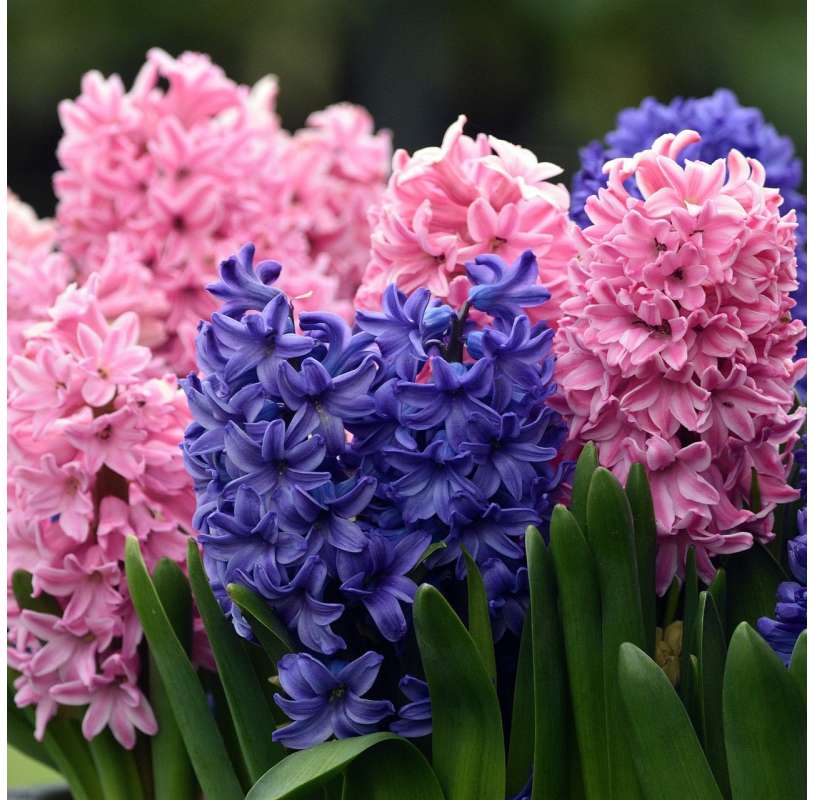Hyacinth Bulbs
One of the most spectacular bulbs of spring.

Encrypted payments for greater security

We ship to Spain and Portugal in 48/72 hours.

Shipping only to mainland Spain and mainland Portugal
Hyacinths have a charm combined with a sweet and subtle aroma.
Hyacinth flower bulbs should be planted in autumn to allow the bulb to experience winter temperatures and break dormancy.
They are believed to be native to the eastern Mediterranean region and need well-draining soil and winter cold to thrive.
Their distinctive fragrance has been used in French perfumes and their appearance is part of Persian New Year celebrations.
In the home garden, they are simply delightful and a sign that spring has arrived and the colourful flower displays are beginning. One of the most common problems for any bulb is waterlogged soil. If the soil does not drain well, the bulb sits in water and falls prey to rot.
Before planting hyacinth bulbs, do a drainage test by digging a trench, filling it with water and observing how long it takes to drain. If the water is still in the trench half an hour later, you will need to amend the soil by mixing in leaf litter or other organic substances, compost or even a little sand or pebbles.
Tillage, drainage and organic matter are the most important components for hyacinth bulbs. In heavy clay soils, consider planting in a raised bed to encourage drainage.
In autumn, between September and October, it is time to plant your bulbs. Choose large, plump bulbs that show no signs of disease or deterioration. Plant the bulbs 3 to 4 times deeper than they are tall. Install them with the pointed side up. Flowers perform best in full sun, but will still flower in partial shade. They should receive at least 6 hours of sunlight daily.
If your soil is low in nutrients, mix in a slow-release 5-5-10 plant fertiliser. Hyacinths in the garden usually do not need any care after planting until flowering because nature will take care of the cooling requirements needed to force flowering once temperatures warm up.
Care of hyacinths outdoors
In good soil, this beautiful plant needs little care. Water after installation if no rainfall is expected. Feed the bulbs every spring with bulb fertiliser. Scrape it into the soil around the bulbs and water. Once the flowers have finished blooming, cut off the flower stalk but leave the foliage. These will produce and store energy for next year's growth.
Once the leaves are yellow and limp, you can usually pull them out of the ground easily if you wish. If winter temperatures do not drop below 16°C, dig up the bulbs and store them in a refrigerator for 8 weeks before replanting.
Slugs are occasional pests, but deer and rabbits avoid this plant because of its oxalic acid content.

 English
English Spanish
Spanish







